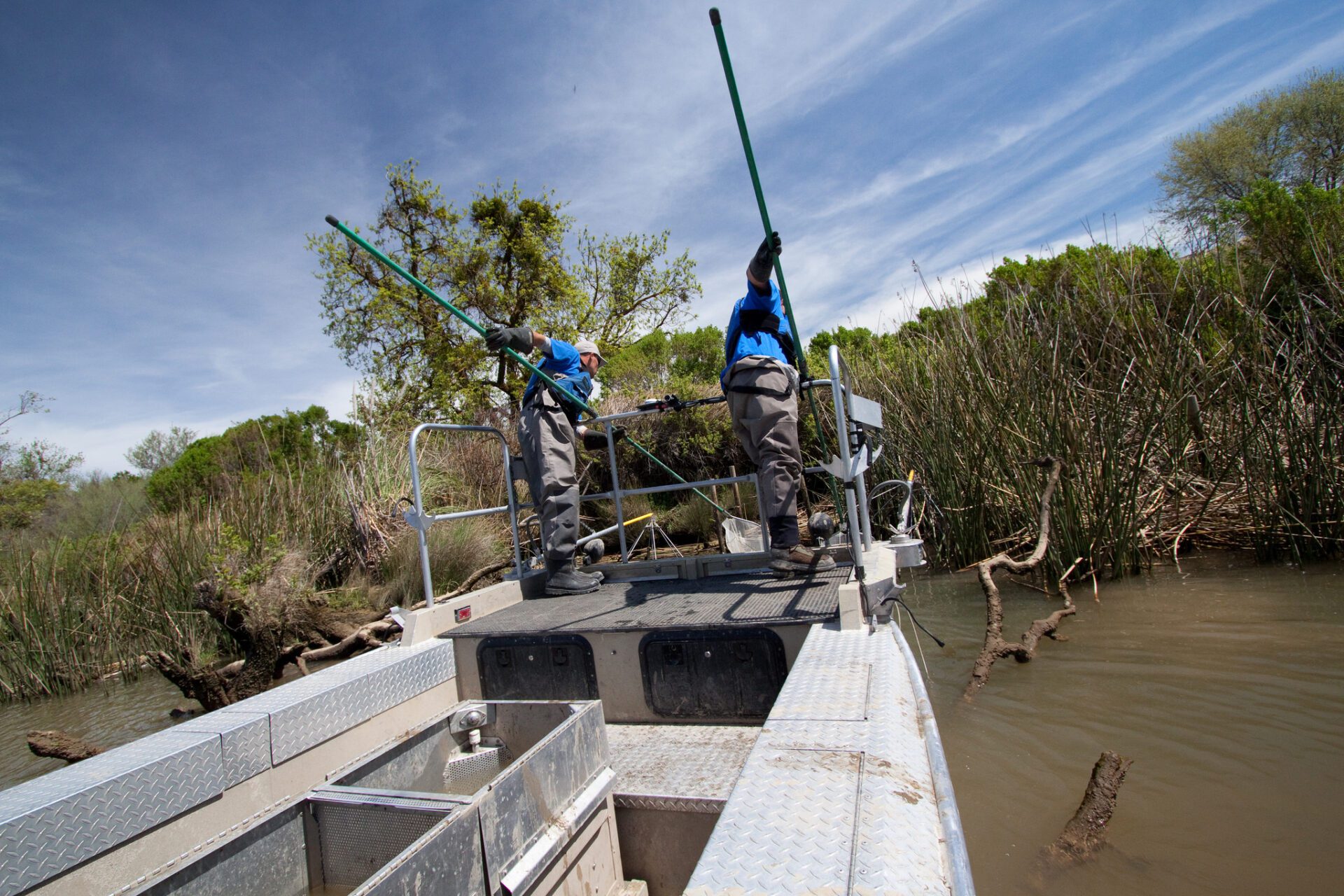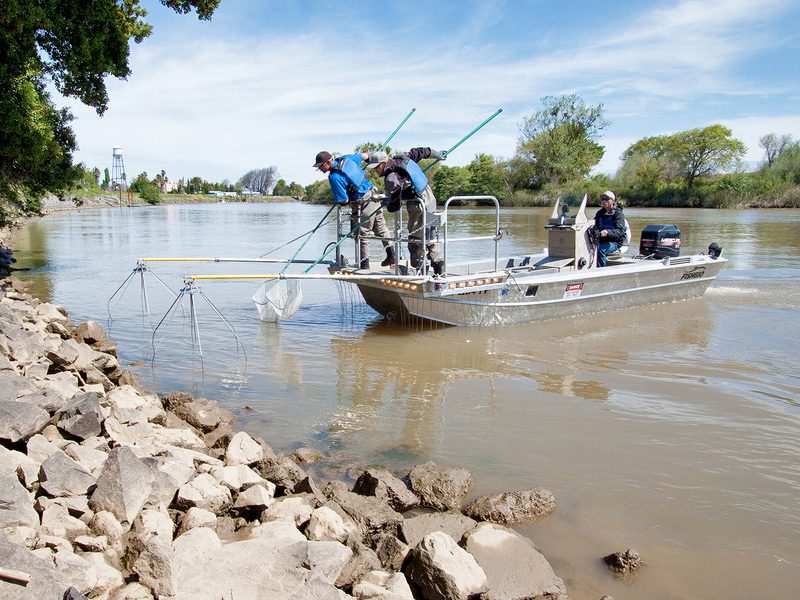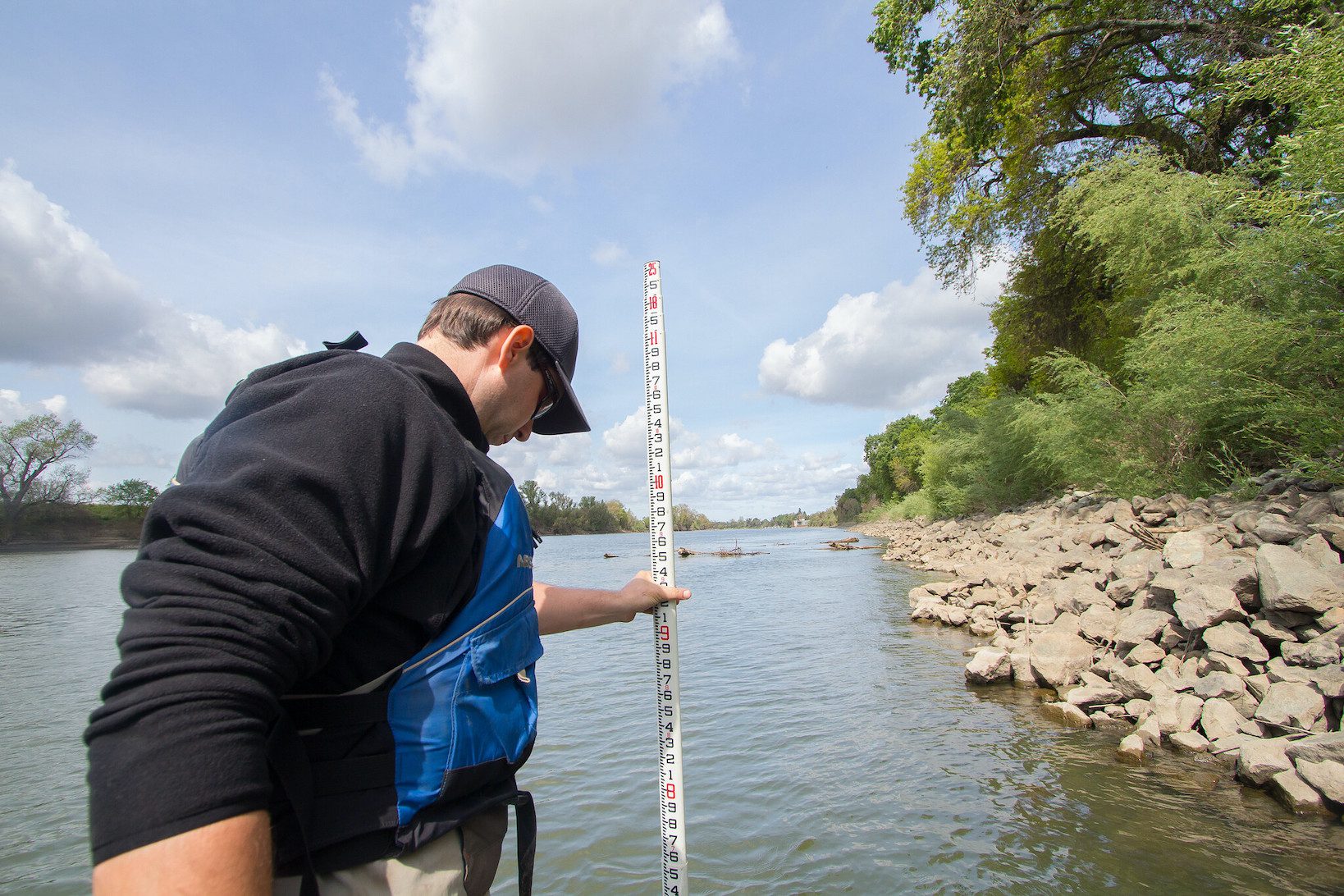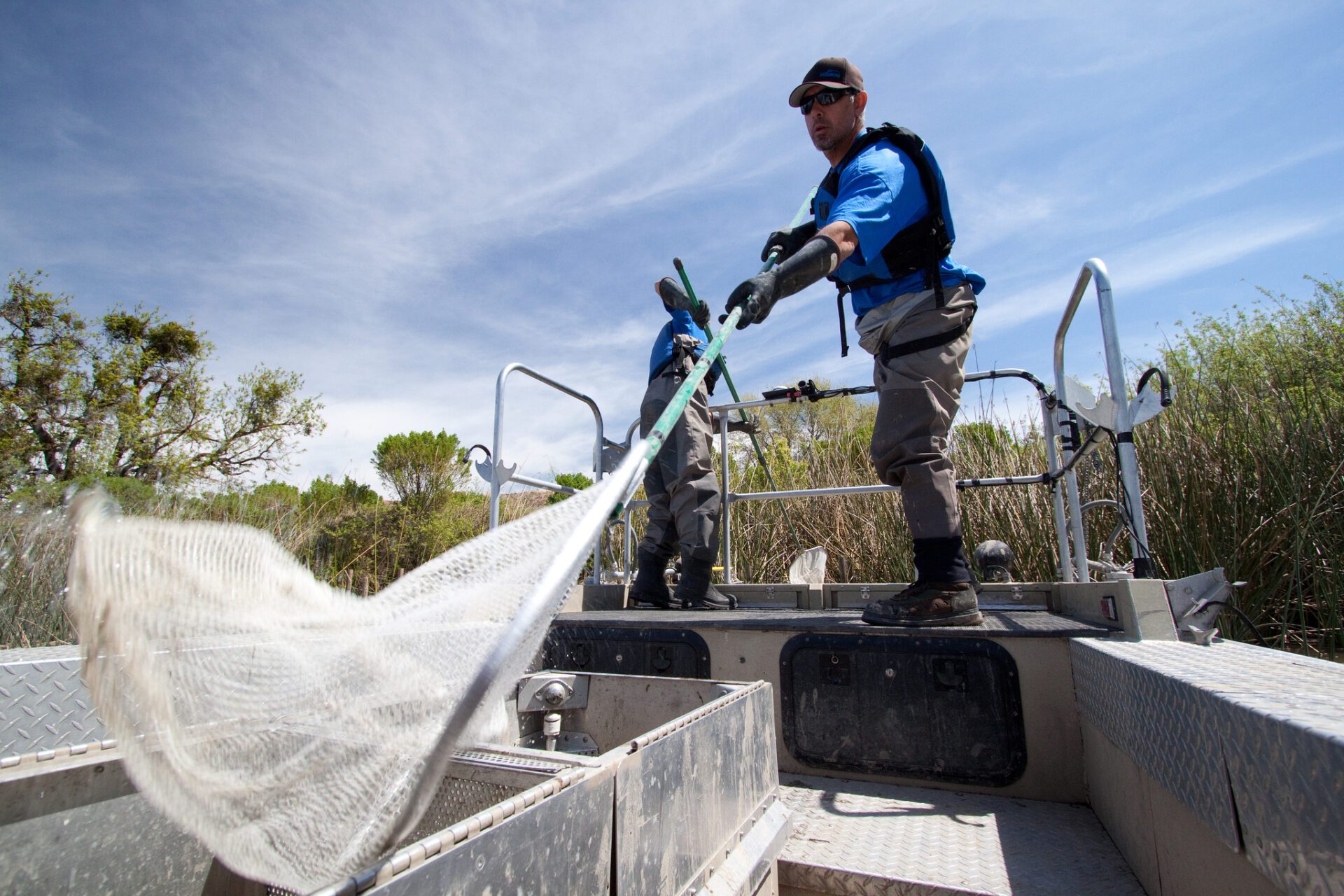

In the wake of Hurricane Katrina, California’s Department of Water Resources and the U.S. Army Corp of Engineers have directed extensive and ongoing repairs to the Central Valley levee system to avoid similar catastrophic flooding. FISHBIO, in collaboration with the Army Corps of Engineers and other federal and state agencies, monitored habitat use of several fish species at recent levee repair sites on the Sacramento River. These repair sites incorporate various design types, such as setback levees and wetland trenches, intended to enhance the habitat value of the sites to native fishes. Our work focused on native anadromous salmonids, as well as their native and introduced predators.
To evaluate the habitat use of these fish species at the levee repair sites, we conducted nearshore abundance surveys with boat electrofishing timed to coincide with the peak outmigration of juvenile Chinook and steelhead. We also measured a variety of associated microhabitat features, such as in-stream woody material, vegetation coverage, depth, and current velocity, to determine habitat preferences of juvenile salmonids. We also evaluated the relative abundance of piscivorous species, including Sacramento pikeminnow and striped, smallmouth, and largemouth bass, to assess the predation risk to juvenile salmonids. Other aspects of our work included radio telemetry to evaluate the habitat use of various species, and monitoring the maturation of the repair sites above and below the water with photographs and side-scan sonar images.
Hellmair, M., M. Peterson, B. Mulvey, K. Young, J. Montgomery, and A. Fuller. 2018. Physical Characteristics Influencing Nearshore Habitat Use by Juvenile Chinook Salmon in the Sacramento River, California. North American Journal of Fisheries Management 38:12. DOI: 10.1002/nafm.10201



